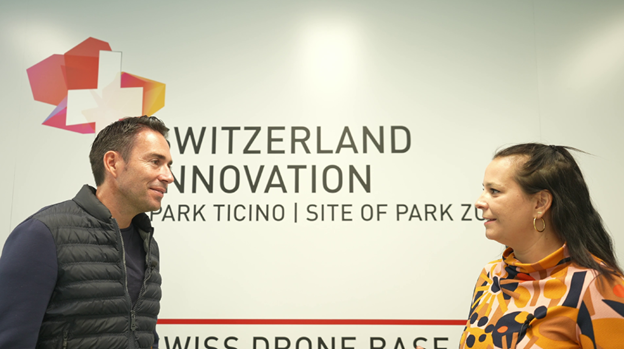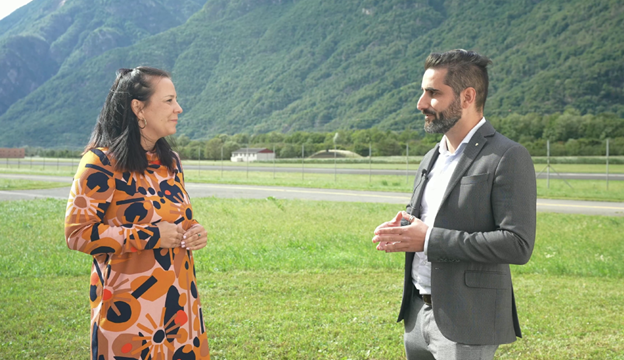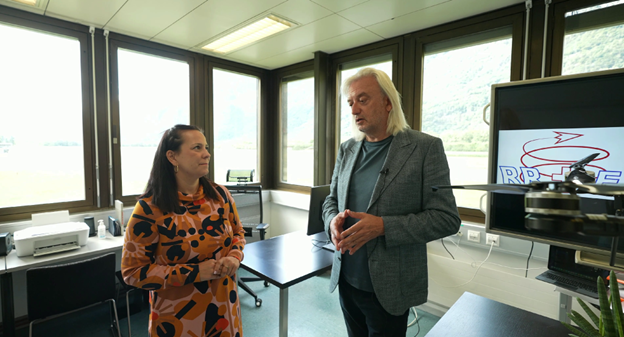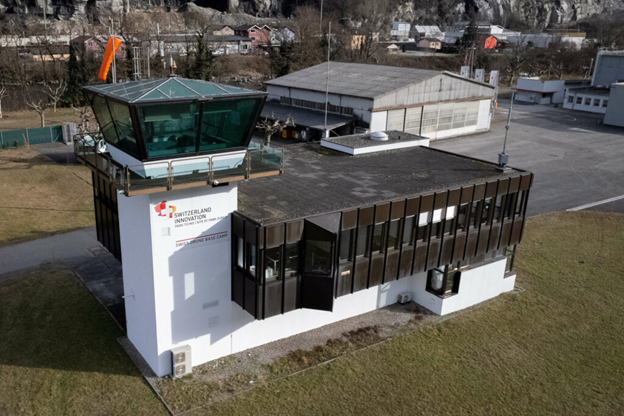During a recent visit, I explored the groundbreaking initiatives of Switzerland’s Innovation Park Ticino (Park Ticino), which is breaking new ground in aviation technology by providing a shared airspace where military, civil aviation, and drones can operate in harmony. Located in the mountainous Ticino region, the park is rapidly becoming a cornerstone of aviation innovation, offering a comprehensive platform for testing, research, and cross-industry collaboration. Through the Swiss Drone Competence Center (SDCC) and a wide range of facilities, Park Ticino is uniquely positioned to drive the future of unmanned aerial vehicle (UAV) technologies, making it an attractive hub for companies and researchers from around the world. Led by CEO Gianmaria Frapolli, the park is uniquely positioned to support the region’s existing competencies and cultivate synergies between research institutions and businesses.

The Swiss Drone Competence Center: At the forefront of advanced UAV research
One of the central components of Park Ticino is the Swiss Drone Competence Center (SDCC), a premier destination for UAV research and development. Situated on a former military airfield in Lodrino, the SDCC boasts an expansive 2,000-square-meter R&D laboratory equipped with cutting-edge tools and technology. This facility allows companies to pursue a wide range of UAV projects, from early-stage concept development to the rigorous testing of fully integrated drone systems in real-world scenarios.
With specialized equipment and an operational control tower, the SDCC supports projects across various stages, from prototyping to advanced BVLOS (Beyond Visual Line of Sight) capabilities. This infrastructure creates an environment where companies can test and refine their systems, ensuring UAVs meet stringent safety and performance standards. Niklaus Stocker, Managing Director of the SDCC, highlights the center's commitment to nurturing long-term innovation: “Our facilities are designed to accommodate both intensive research projects and quick, iterative testing. The flexibility of our lab space, paired with our state-of-the-art technology, enables rapid advancement in UAV technologies.”
In addition to its robust infrastructure, SDCC collaborates closely with Swiss universities and international research institutions, including ETH Zurich, Università della Svizzera Italiana (USI), and SUPSI. These collaborations are important in advancing UAV technologies, as academic research drives innovation in critical areas such as artificial intelligence, real-time control systems, and drone swarm management. By working with academia, the center addresses the most complex challenges in drone technology, including regulatory compliance, air traffic management, and autonomous flight systems. Ticino’s challenging Alpine topography further supports these initiatives, pushing the boundaries of UAV technology in demanding environments.

A singular airspace for military, civil aviation, and drone integration
A defining feature of Park Ticino is its singular airspace, where military, civil, and drone technologies coexist and can be tested side by side. This innovative approach allows for comprehensive testing and simulation in a real-world environment, making it an ideal location for companies developing autonomous flight systems, drone traffic management solutions, and UAV technologies for complex urban applications. With this unique airspace configuration, Park Ticino has created a framework that aligns with Swiss and European safety regulations, allowing seamless integration across sectors.
Paolo Bellezza Quater, CEO of RR Engineering and co-founder of the Italian-Swiss company Nimbus, underlines the strategic value of this shared airspace: “Working in Ticino’s integrated environment allows us to test UAVs alongside civil and military aviation operations, ensuring our technology meets the highest standards. Collaborating with universities and meeting EASA’s certification standards provides a strong foundation for innovation.”
The park’s strategic location near the Swiss-Italian border strengthens its value as a hub for cross-border collaboration. Italian companies and other international entities are increasingly establishing offices in Ticino to access this one-of-a-kind airspace. These partnerships strengthen the Park Ticino’s mission to foster international synergies and enable global advancements in UAV technology.

Advancing drone defense systems: JAM’s AG
At the Park Ticino, JAM’s AG plays a key role in advancing drone defense and detection technologies. Renowned for its expertise in convoy protection, EOD systems, and comprehensive drone detection, JAM’s AG leverages the park’s facilities to refine and enhance its offerings. The company benefits from the park’s dedicated radar test range and close collaboration with the Swiss military, enabling the seamless integration of radar and jamming systems.
Benjamin Schneck, the Chief Technical Officer of JAM’s AG, underscores the significance of the Ticino location: “Here, we have the freedom to extensively test and optimize our systems without the constraints typical of other testing sites. This environment allows us to create a holistic approach to drone defense, integrating detection and jamming systems that meet the real-world demands of modern UAV management.”
This strategic presence at Park Ticino not only bolsters JAM’s AG’s mission but also strengthens the park’s ecosystem, providing critical capabilities for comprehensive airspace safety.

Swiss quality and precision allow for safe UAV integration
Switzerland’s global reputation for precision and quality is deeply embedded in the ethos of Park Ticino. The park’s operations reflect the detailed standards associated with Swiss engineering, ensuring that all research, testing, and development meet rigorous quality controls. Collaborations with regulatory bodies such as the Federal Office of Civil Aviation (FOCA) and the European Union Aviation Safety Agency (EASA) ensure compliance with both local and international regulations, creating a benchmark for safe and sustainable UAV integration.
Through its adherence to these standards, Park Ticino has become a leader in aviation safety, demonstrating how UAVs, civil aviation, and military technology can coexist effectively within a shared airspace. The park’s commitment to maintaining these standards also serves as a model for other nations seeking to implement similar frameworks.
















Comments